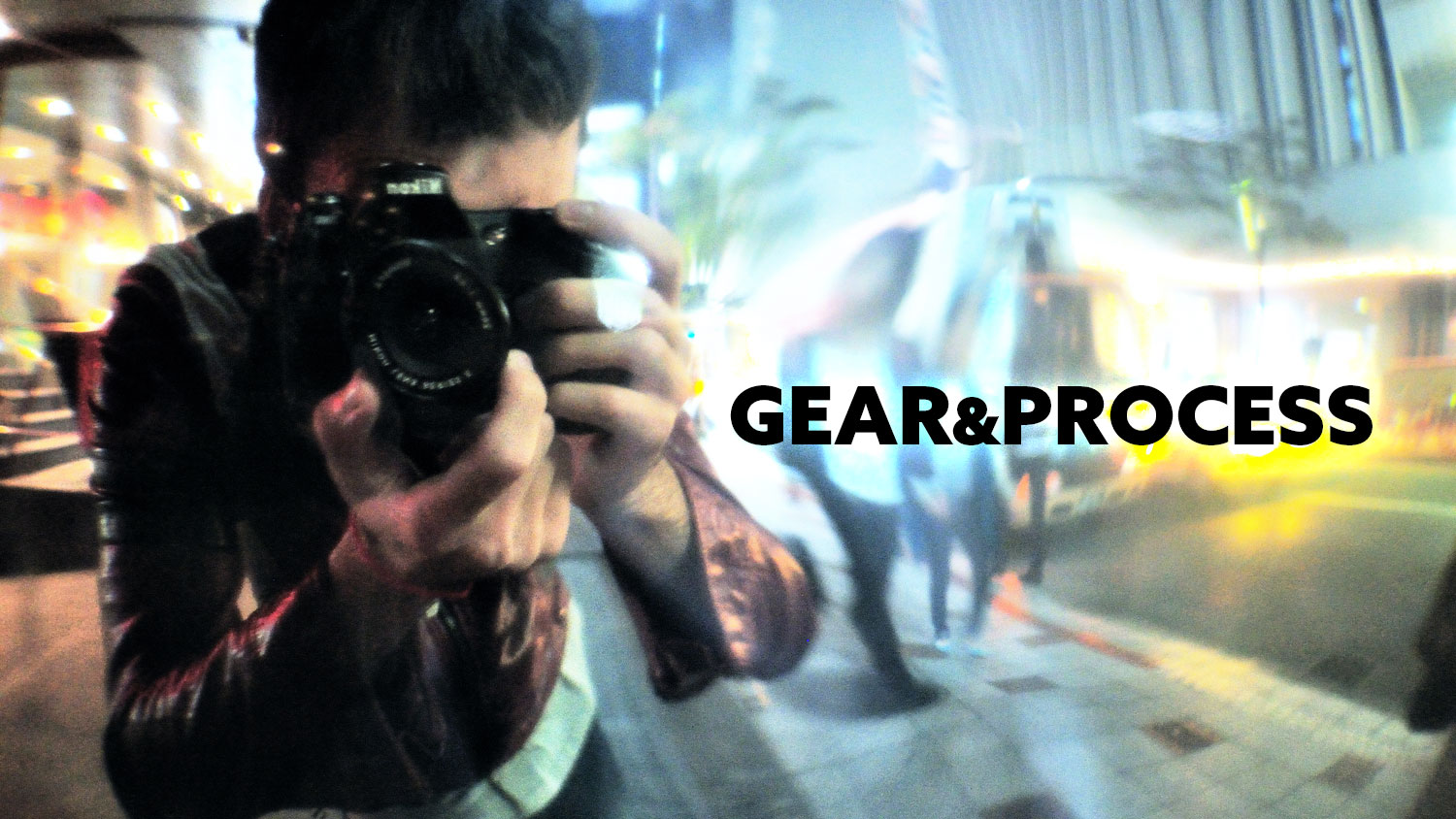I often get questions about the camera that I use and the editing process I employ. Since many of you would like more detail than just the make and model, I would like to give an overview of my gear and editing methods. If you're interested in my shooting process, I have written a more detailed explanation. Anyway, let's start with the gear.
Nikon D3/D4
The camera I shoot with is a Nikon D4 (previously D3). You may ask yourself why I shoot street photos with such a massive camera. And you'd be right to feel that it's an odd choice due to its size, weight, noisy shutter, and complete lack of subtlety that most street photographers seek out in the Leicas, the Fujifilms, and so on.
However, when I bought this camera in 2010, the D3 had some qualities that made it a great fit for the conditions in which I do most of my street shooting; that is, at night. First and foremost, its low light capability and dynamic range were very good for its time, and even to this day the high ISO performance of this camera is nothing to sneeze at. Since I do much of my photography at night, this is a huge plus. Besides that, the view finder is massive, and bright. Besides the weight factor, the ergonomics and balance of the camera are great for me. Finally, the camera is fast in all respects (focus, metering, etc.)
Despite all this, the camera body itself is not as important as the glass we put on it. So onto lenses!
Voigtländer 40mm f/2.0 Ultron SL II
The Voigtländer 40mm f/2.0 is a manual focus lens best suited for full frame cameras. For a relatively low price it can produce very sharp images with generally pleasing bokeh wide open. But what I really like about it are the 40mm focal length, and the ergonomics of using a dedicated manual lens when it comes to street photography. The buttery smooth dampened focus ring and relatively long focus pull both allow me to use manual focus techniques such as zone focusing without issue. I've practiced with this lens for years, and I've gotten quite good at nailing the focus at 4 meters out, even wide open at f/2. You can read more about how I use this lens in my Manual Focus tutorial.
Nikon 14-24mm f/2.8G
It's very expensive hunk of glass, but the Nikon 14-24mm f/2.8G is worth every penny. I picked this lens up last year and it replaced my Nikon 28mm f/1.8G (a good wide prime). The 14-24 is a beast of a wide angle lens. It's heavy and obnoxiously large, but it produces exceedingly sharp images at 14mm, even wide open at f/2.8. The distortion, typical of ultra-wide lenses, is also easily fixed in Photoshop when necessary. I use this lens for urban landscape photography, with and without a tripod. It's my preferred lens to take up on the rooftops for dramatic views of the Tokyo metropolis.
Nikon 85mm f/1.8G
Finally, on occasion I use an the Nikon 85mm f/1.8G for portraits and the like. Compared with the more professional Nikon 85mm f/1.4G, the smaller, cheaper, Nikon 85mm f/1.8G does the job for me. On occasion, I use this lens for street photography as well. It's an affordable lens that serves its purpose very well.
The Editing Process
For editing purposes I use Adobe Camera Raw, which is a component of Photoshop. It's essentially a stripped down, but still very functional, version of Lightroom. I use Camera Raw over Lightroom because I don't require the management and organization features. Regarding editing, I spend as little at 2 minutes on most photos with an upper limit of about 15 minutes. However, all of my shots have at least some work done on them, and are never published directly from the camera. If there is more interest, I will write a more detailed tutorial in the future.



